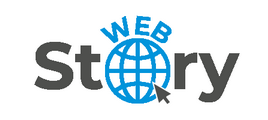The use of design thinking has grown in popularity as a potent strategy for encouraging creativity and resolving challenging issues. This paradigm fosters innovation, collaboration, and iterative development by prioritising the needs of humans. Introducing a WSQ design thinking course into your company can change how you approach problems and come up with solutions. The approaches to successfully incorporating design thinking into your organisational procedures are examined in this article.
Knowing the Design Thinking Principles
Understanding the fundamentals of design thinking is crucial before moving forward with implementation. Iterative learning, creativity, and empathy are highlighted in this paradigm. Understanding end users’ demands and experiences in great detail is a prerequisite for empathy. Diverse ideas and solutions are explored more often when one is creative. Iterative learning emphasises ongoing improvement via testing and prototyping. These guidelines guarantee that the solutions are both creative and user-centred.
Creating a Multifunctional Group
Collaboration and variety of thought are essential to design thinking. To carry it out successfully, a cross-functional team with a variety of backgrounds and skills must be put together. This team should represent a diverse range of departments and backgrounds to ensure a comprehensive approach to problem-solving. Utilising the distinct perspectives and abilities of every team member enables you to produce more creative and all-encompassing solutions.
Identifying the Issue
Clearly identifying the issue you’re attempting to solve is a crucial first step in the design thinking process. In order to comprehend the demands, difficulties, and preferences of users and stakeholders, this entails obtaining their views. Methods like observations, interviews, and empathy mapping can be used to find important information. Combine these ideas to create a concise and understandable problem statement. The remainder of the design thinking process will be guided by this assertion, which makes sure that efforts are concentrated on meeting a particular need.
Creating and Generating Ideas
Once you have a clearly defined problem, proceed to the brainstorming stage. Urge your group to come up with a wide range of possible fixes. Since creativity and unrestricted thought are what this stage is all about, foster an atmosphere where all ideas are accepted without delay. Using the team’s varied viewpoints, the objective is to investigate as many options as you can. You can find creative answers through this cooperative ideation approach that would not come to mind through traditional thinking.
Testing and Prototyping
The following step is to prototype your ideas in order to make them a reality after you have come up with a variety of them. Make concrete versions of the best-performing solutions. Depending on the sort of problem to be solved, prototypes might be as basic as drawings, models, or interactive simulations. Making something that users can test and assess is the goal. Conduct iterative testing and collect user feedback to enhance and optimise the prototypes. Prototyping and testing are done continuously to make sure the final product meets user expectations and demands.
Integrating and Scaling Design Thinking
Scaling and integrating design thinking throughout the company is the last stage after creating a workable solution. Talk to other departments and teams about the lessons and insights you gained from the first assignment. Urge them to apply the ideas and methods of design thinking to their own work. Provide seminars or training events, like a WSQ design thinking course, to provide staff members with the skills and information they need. You may promote ongoing innovation and progress by incorporating design thinking into the core of the company.
Conclusion
Putting design thinking into practice in your company needs to be done so strategically and thoughtfully. You can use design thinking to revolutionise your company by comprehending its tenets, developing a positive attitude, assembling a varied team, and adhering to a systematic procedure. Adopt this user-centred approach to stimulate creativity, improve your ability to solve problems, and produce solutions that your users will find truly meaningful.

